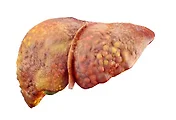What is Skinny Fat?
'Skinny fat' refers to a condition where a person appears lean on the outside but has a high body fat percentage and low muscle mass. Unlike general obesity, which is identified using Body Mass Index (BMI), skinny fat occurs when BMI falls within the normal range, but the body fat percentage is excessively high. This state is not easily detected by scales alone; body composition analysis tools like bioelectrical impedance analysis (BIA) or InBody machines are required to measure body fat percentage and muscle mass.
Skinny fat is more than a cosmetic concern; it is associated with an increased risk of chronic diseases such as cardiovascular disease, metabolic syndrome, and type 2 diabetes. Therefore, early detection and prevention are essential.

Major Causes of Skinny Fat
The causes of skinny fat go beyond a simple "lack of exercise" explanation. Multiple physiological, environmental, and lifestyle factors contribute to this condition. Key causes include:
Lack of Exercise and Muscle Loss
A sedentary lifestyle is one of the most significant causes of skinny fat. When physical activity is lacking, muscle mass gradually decreases, leading to a lower basal metabolic rate (BMR). As BMR declines, the body’s ability to burn energy decreases, causing excess energy to be stored as fat.
Detailed Causes:
- Insufficient physical activity: Lack of physical activity leads to a decline in muscle mass and an increase in fat accumulation.
- Cardio-only workouts: Aerobic exercises can reduce body weight, but they are insufficient for building or maintaining muscle mass. Resistance training is essential to increase muscle mass.
- Sedentary lifestyle: Office workers or people with remote jobs often sit for long periods, limiting muscle use and promoting fat storage.
Imbalanced Nutrition
Imbalanced nutrition is a major contributor to skinny fat. Inadequate nutrient intake prevents muscle growth, while excessive intake of high-calorie foods promotes fat accumulation.
Detailed Causes:
- Insufficient protein intake: Protein is essential for muscle growth and maintenance. Insufficient protein intake hinders muscle development, which can contribute to the skinny fat condition.
- High-carb, high-fat diet: Frequent consumption of processed foods, fast food, and snacks rich in carbohydrates and fats leads to fat accumulation.
- Irregular eating habits: Skipping meals or binge eating results in excess calorie intake, increasing the likelihood of fat accumulation.
Genetic Factors
Genetic factors influence body fat distribution, BMR, and the ability to build muscle. Inherited traits from parents affect not only body shape but also the way fat is stored in the body.
Detailed Causes:
- Body shape inheritance: People with certain inherited body shapes may have higher fat accumulation in specific areas, even with a normal BMI.
- Differences in BMR: People with genetically low BMR are more prone to fat accumulation, leading to the skinny fat condition.
Hormonal Imbalance
Hormonal imbalances play a direct role in fat accumulation and metabolic rate. Cortisol, insulin, and sex hormones are closely linked to the development of skinny fat.
Detailed Causes:
- Increased cortisol: Chronic stress raises cortisol levels, promoting fat accumulation, especially in the abdominal area.
- Insulin resistance: Excessive sugar consumption can lead to insulin resistance, promoting fat storage.
- Changes in sex hormones: Low testosterone in men and estrogen imbalance in women can lead to muscle loss and increased fat storage.
Lack of Sleep and Irregular Lifestyle
Lack of sleep and an irregular daily routine affect metabolic health and promote fat accumulation. Poor sleep disrupts the balance of hunger-regulating hormones like ghrelin and leptin.
Detailed Causes:
- Sleep deprivation: Less than six hours of sleep per night increases the risk of body fat accumulation.
- Shift work and irregular sleep schedules: People with irregular work hours often have disrupted circadian rhythms, increasing the risk of fat accumulation.
Aging and Natural Changes in the Body
Aging naturally causes a decline in muscle mass and an increase in body fat. As people age, they become more prone to the skinny fat condition.
Detailed Causes:
- Muscle loss: Muscle mass decreases by about 1% per year after the age of 30.
- Decline in BMR: Reduced muscle mass leads to a lower BMR, causing a reduced ability to burn energy.
- Hormonal changes: Growth hormone and testosterone decrease with age, promoting fat storage and muscle loss.
The Health Risks of Skinny Fat
Since people with skinny fat often appear thin, they may not be aware of their health risks. However, the condition is linked to the following health issues:
- Increased risk of metabolic syndrome: Abnormal blood pressure, blood sugar, and cholesterol levels can lead to metabolic syndrome.
- Higher risk of cardiovascular disease: Excess visceral fat increases the risk of atherosclerosis and heart attack.
- Increased risk of insulin resistance and diabetes: Insulin resistance increases the risk of developing type 2 diabetes.
- Risk of sarcopenia: Muscle loss reduces physical function and increases the risk of falls in older adults.
Conclusion
Skinny fat is a state in which a person appears lean but has a high body fat percentage and low muscle mass. Despite looking thin, the condition poses significant health risks, including metabolic syndrome, cardiovascular disease, and diabetes. To prevent and improve skinny fat, it is essential to engage in regular exercise, particularly resistance training, maintain a balanced diet, and manage sleep patterns. Regularly checking body composition and seeking professional guidance for personalized health management are also crucial steps to reduce the risk of skinny fat.
'생활백서' 카테고리의 다른 글
| 아메리카노의 역습, 다이어터가 무작정 선호하기엔 위험이 따른다. 현명한 음료 선택방법에 대해 알아보자. (57) | 2024.12.20 |
|---|---|
| Great News for Menopausal Women – The Rediscovery of Beets for Blood Pressure Control. (64) | 2024.12.19 |
| 잠꼬대가 심하다면, 나도 렘수면 장애일까. 수면장애의 위험성에 대해 알아보자. (67) | 2024.12.19 |
| Escape from Fatty Liver – Healthy Eating and Lifestyle Habits to Overcome It. (72) | 2024.12.18 |
| The Silent Organ—Understanding the Causes of Fatty Liver Disease. (53) | 2024.12.18 |



